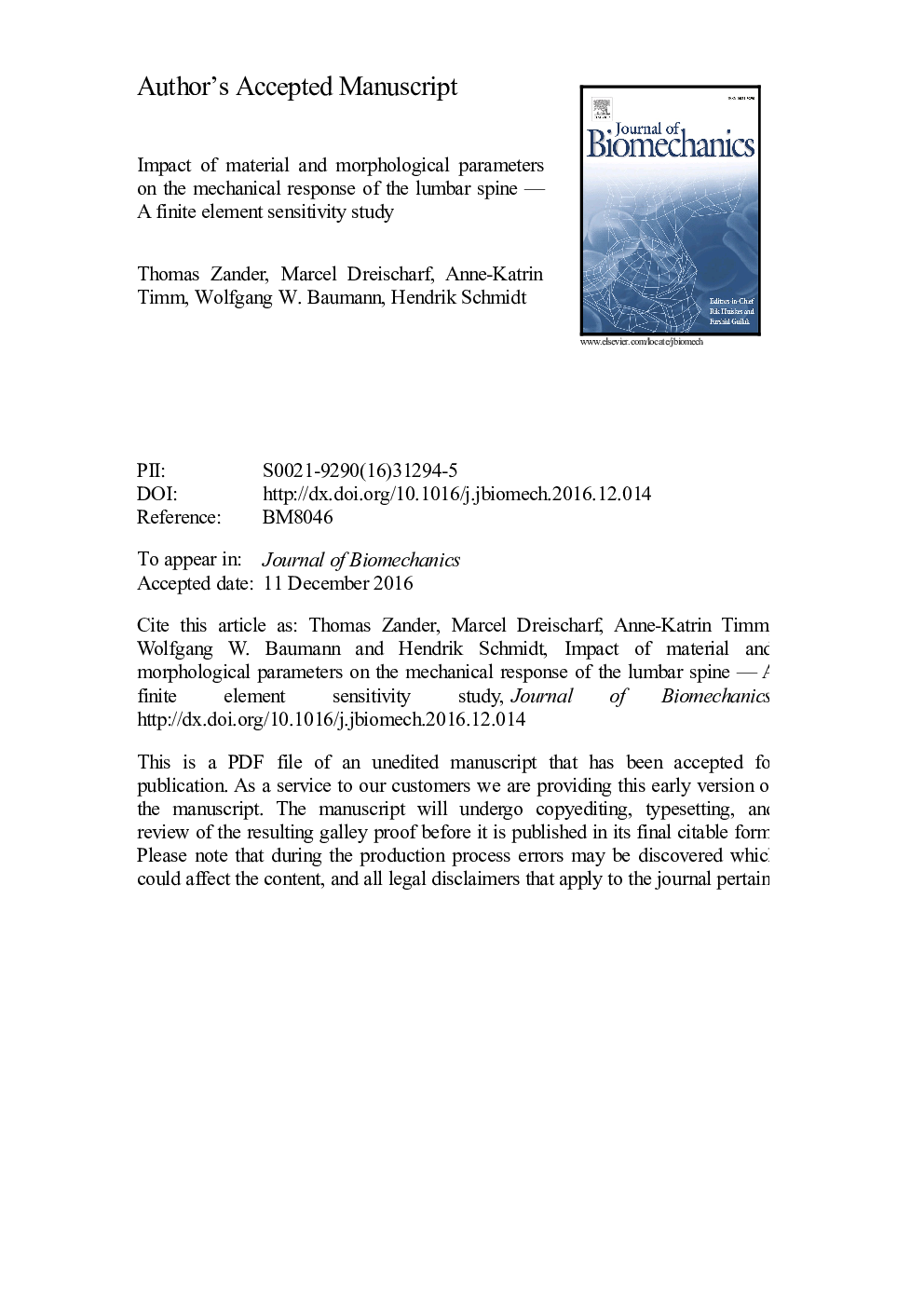| Article ID | Journal | Published Year | Pages | File Type |
|---|---|---|---|---|
| 5032210 | Journal of Biomechanics | 2017 | 15 Pages |
Abstract
Finite element models are frequently used to study lumbar spinal biomechanics. Deterministic models are used to reflect a certain configuration, including the means of geometrical and material properties, while probabilistic models account for the inherent variability in the population. Because model parameters are generally uncertain, their predictive power is frequently questioned. In the present study, we determined the sensitivities of spinal forces and motions to material parameters of intervertebral discs, vertebrae, and ligaments and to lumbar morphology. We performed 1200 model simulations using a generic model of the human lumbar spine loaded under pure moments. Coefficients of determination and of variation were determined for all parameter and response combinations. Material properties of the vertebrae displayed the least impact on results, whereas those of the discs and morphology impacted most. The most affected results were the axial compression forces in the vertebral body and in several ligaments during flexion and the facet-joint forces during extension. Intervertebral rotations were considerably affected only when several parameters were varied simultaneously. Results can be used to decide which model parameters require careful consideration in deterministic models and which parameters might be omitted in probabilistic studies. Findings allow quantitative estimation of a model׳s precision.
Keywords
Related Topics
Physical Sciences and Engineering
Engineering
Biomedical Engineering
Authors
Thomas Zander, Marcel Dreischarf, Anne-Katrin Timm, Wolfgang W. Baumann, Hendrik Schmidt,
